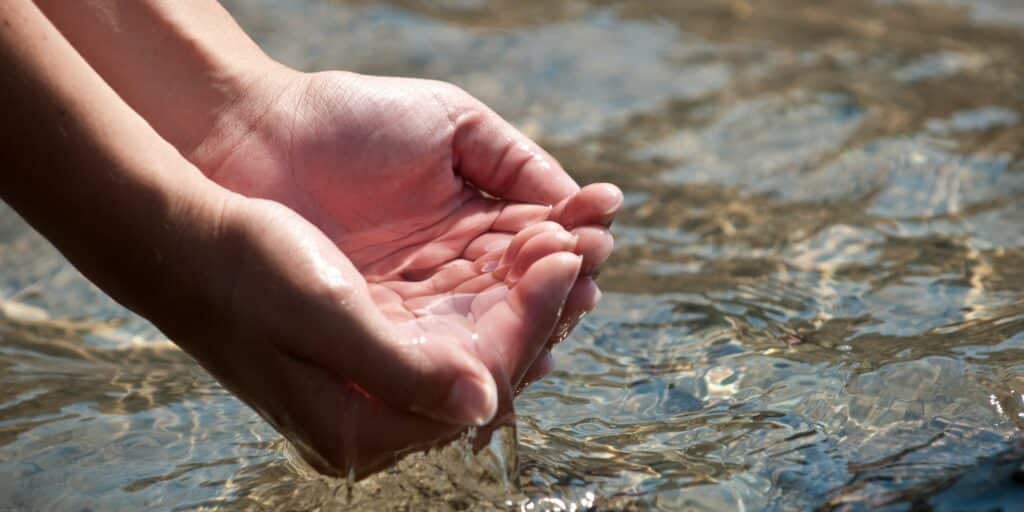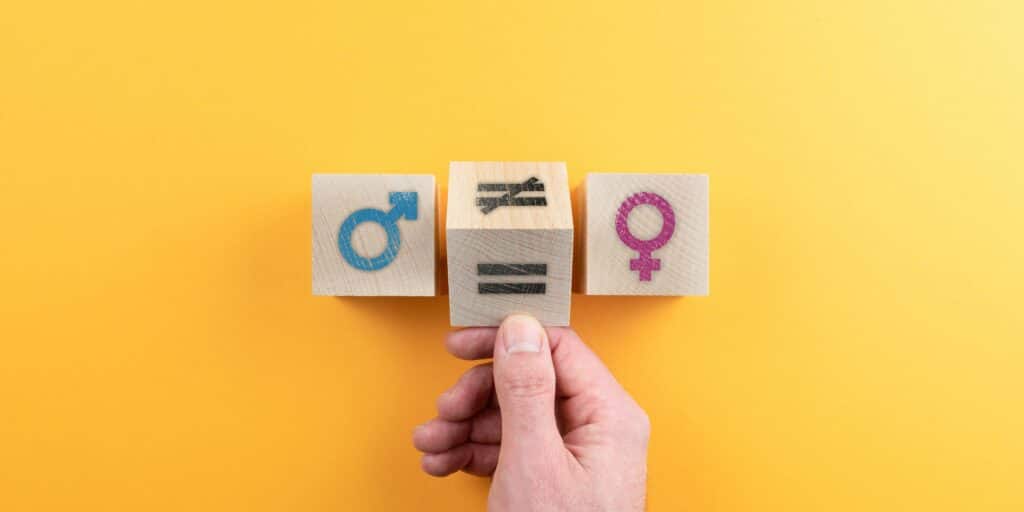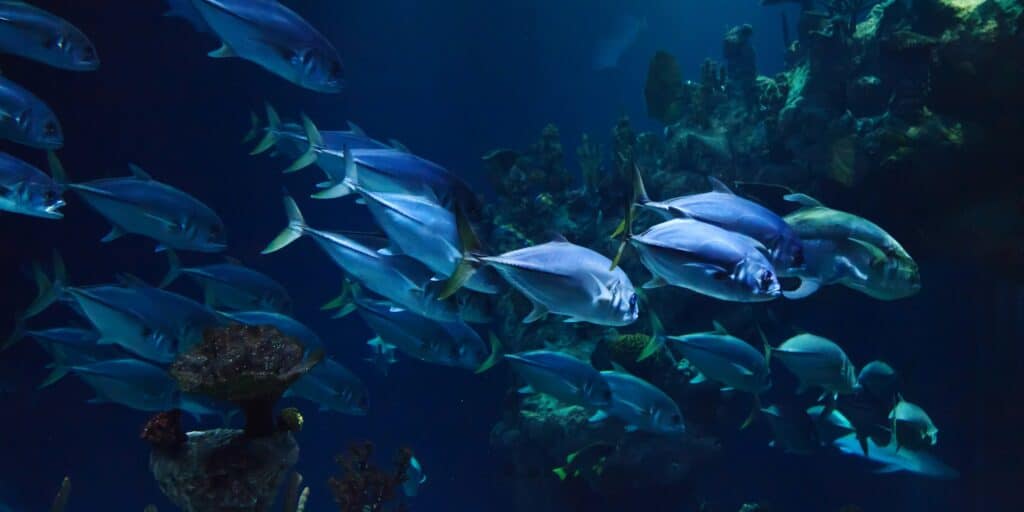In 2015, the United Nations adopted 17 Sustainable Development Goals (SDGs), which aim at tackling major global challenges such as climate change, poverty, hunger, and gender equality. SDG 14 focuses on the sustainable use and conservation of oceans, seas, and marine resources. However, beyond this specific goal, the ocean in its broadest definition is linked to many of the SDGs. Therefore, all stakeholders in the shipping industry have a critical role to play in supporting the UN’s sustainability agenda.
The ocean is an essential resource for communities and industries worldwide. Approximately 90% of global trade, including the transportation of food, raw materials, and finished goods, is carried out by sea. Moreover, the ocean supports the global economy through fishing and seafood production, offshore oil and gas exploration, renewable energy generation, and marine tourism.
Furthermore, the ocean plays a critical role in the survival and well-being of humans, animals, and natural ecosystems. It regulates the climate, maintains biodiversity, and contributes to nutrient cycling, among other services.
What is the role of the ocean in achieving economic-related SDGs
SDG 8 - Decent Work and Economic Growth
The “blue economy” encompasses a range of industries, including shipping, fishing, aquaculture, energy production, and tourism, and is estimated to be worth around US$2.5tn per year, constituting approximately 3% of the 2020 global GDP. In addition to these strategic sectors, other fields such as marine research, communications, engineering, and maritime law also play a significant role in driving the growth of the blue economy.
What is the connection between the sea and environment-related SDGs?
Given the importance of the ocean for numerous industries and communities worldwide, sustainable management of this resource is critical to ensure the well-being and prosperity of our planet and its inhabitants. By promoting sustainable practices and conservation efforts, we can help to safeguard the ocean’s health and resilience for future generations.
SDG 6 - Clean Water and Sanitation
Approximately 80% of the plastic pollution in the ocean originates from around 1,600 rivers, particularly those in urban areas. Climate change-induced sea-level rise can also cause saltwater intrusion into freshwater sources and disrupt the natural cycles that regulate freshwater systems. In regions with limited freshwater resources, desalination can be a promising solution to convert saltwater into safe, drinkable freshwater.

SDG 7 - Affordable and Clean Energy
The production of wind energy is on the rise with the installation of offshore wind farms, and it has the potential to reach 630 GW by 2050, or even 1,000 GW in a 1.5-degree pathway scenario. Additionally, while tidal stream and wave energy are still in their early stages of development, they offer a promising carbon-neutral energy source that can be forecasted years in advance.
The global tidal power market potential is estimated to range from 150-800 TWh per year, with an annual value of US$41.2 billion. In Europe, combining tidal and wave energy has the potential to meet up to 10% of the energy demand by 2050, provided that appropriate regulatory incentives are put in place.
SDG 13 - Climate Action
Human activities have contributed to warming waters, melting glaciers, and ocean acidification, leading to severe impacts on marine ecosystems and coastal communities, particularly on small islands. The oceans play a crucial role in regulating the global climate by absorbing heat and carbon dioxide, as recognized by organizations such as NOAA, IUCN, and IMF.
To combat climate change and biodiversity loss, blue-carbon projects can be implemented, where carbon can be stored in marine environments such as whales, which can store large amounts of carbon, and seagrass meadows that can capture and sequester carbon at a greater rate than tropical rainforests.
SDG 14 - Life Below Water
The ocean covers over 70% of the Earth’s surface, yet 80% of it remains unexplored. Coral reefs, which make up less than 1% of the Earth’s surface, sustain marine life for approximately 500 million people. However, climate change-induced coral bleaching threatens these ecosystems, which could cost at least US$500 billion per year by 2100.
According to the WWF, despite declines in marine vertebrate populations over the last few decades, conservation efforts aimed at sustainable ocean resources and responsible management of fisheries, including both large and small-scale operations, could help restore 50 to 90% of marine life by 2050.
SDG 11 - Sustainable Cities and Communities
Coastal marine areas are home to approximately 40% of the global population, and these regions also serve as major economic hubs, handling around 90% of global trade. However, these communities are particularly vulnerable to the impacts of climate change, including sea-level rise, increased storm intensity, and ocean acidification.
To address these challenges, coastal communities are increasingly turning to blue-green infrastructure, which leverages the natural protective properties of ecosystems like wetlands, oyster beds, and barrier islands to establish a “living shoreline” that can safeguard coastal communities. Such approaches can also provide other benefits, such as improving water quality, enhancing biodiversity, and supporting sustainable fisheries.
SDG 12 - Responsible Consumption and Production
Approximately 80% of marine pollution comprises plastic waste, which results in 10 to 11 million tons of plastic entering the ocean annually. Chemical pollution is also a significant issue, leading to disturbances in the marine ecosystem. In Europe, 96% of the Baltic Sea, 91% of the Black Sea, 87% of the Mediterranean Sea, and 75% of the northeast Atlantic Ocean are affected by problematic levels of contamination. Additionally, the demand for blue foods is putting pressure on fish stocks, but sustainable fishery management could generate an additional 16 million tons of catch, worth approximately $53 billion in profit.
SDG 15 - Life on Land
The ocean sustains life on land by providing 75% of the rainfall and 50% of the oxygen needed for terrestrial ecosystems. In addition, the ocean’s ability to absorb heat and carbon dioxide helps protect the planet from the effects of climate change. Lastly, its contributions to the food, drinking water, and breathable atmosphere that supports all life on Earth make it an essential life-support system.

How is the sea linked to society-related SDGs?
SDG 1 - No Poverty
According to the OECD and FAO, coastal and marine ecosystems enable the livelihoods of over 3 billion people worldwide. In 2020, fishing and aquaculture provided employment for almost 59 million people globally, with 84% in Asia, followed by Africa (10%), and Latin America and the Caribbean (4%).
SDG 2 - Zero Hunger
Nearly 3 billion people depend on “blue foods” from the ocean as their primary source of protein. The global consumption of these foods, excluding algae, has grown from 28 million tons in 1961 to 158 million tons in 2019, mainly because of changing dietary habits. Researchers across 11 countries have found that the ocean could supply over six times more food than it currently does, providing more than two-thirds of the animal protein required to feed the future global population.
SDG 3 - Good Health and Well-Being
The ocean is vital to the health of our planet and its inhabitants. It is responsible for producing at least half, and possibly up to 80%, of the world’s oxygen, making it essential for human life.
Seafood is a primary source of protein for billions of people, and the ocean helps regulate freshwater cycles. Additionally, having a view of the ocean has been linked to improved mental well-being.
However, the ocean is facing threats from plastic and chemical pollution, including toxins such as mercury, arsenic, and lead, which can eventually enter our bodies. Although research on the effects of consuming microplastics and ocean chemicals is ongoing, it is believed that they could lead to cancer, organ damage, and the disruption of bodily functions.
SDG 5 - Gender Equality
As per the UNCTAD, women play a significant role in aquaculture and fisheries, accounting for more than half of the small-scale catches in the Pacific. However, they are often in positions viewed as unskilled or temporary and receive low pay or no pay at all.
Research has shown that their involvement in aquatic food production benefits vulnerable communities and children. In contrast, according to the IMO, women make up just 1% of the global seafaring workforce.
Therefore, countries must invest in the education and employment of women and girls, as gender equality could increase global GDP by US$13 trillion and contribute to the blue economy.

SDG 10 - Reduced Inequalities
A sustainable blue economy has the potential to address existing inequalities between countries, particularly the disproportionate impact of climate change on Small Island Developing States.
These states are among the most vulnerable to rising sea levels, extreme weather events, marine heat waves, and ocean acidification, despite contributing less than 1% of total greenhouse gas (GHG) emissions, which is far below that of developed countries.
How can the marine industry stakeholders help achieve the UN SDGs?
The sustainable management of the ocean is essential for achieving the SDGs and ensuring continued economic growth and development. The marine industry has an important role to play in achieving these goals by adopting sustainable practices and supporting the transition to a more sustainable blue economy.
Cutting down pollution from ships
Considering that the shipping sector is responsible for 3 percent of global emissions of greenhouse gas and a significant portion of marine pollution, minimizing its environmental impact is a top priority for stakeholders.
In 1982, the United Nations signed the Convention on the Law of the Sea (UNCLOS), which includes a specific convention known as the International Convention for the Prevention of Pollution from Ships (MARPOL) to prevent pollution of the seas by ships (including GHG, oil, chemicals, sewage, and garbage).
To move towards green sea transportation, multiple measures are being implemented under the supervision of the International Maritime Organization (IMO), including:
- arranging sustainable operations;
- adopting energy-efficient technologies and promoting renewable power sources (such as solar and wind) on board vessels;
- optimizing vessel routing;
- using clean fuels (such as LNG, hydrogen, ammonia, biodiesel, renewable diesel, bio-methanol, and bio-LNG) as alternatives to heavy fossil fuel oil;
- implementing measures such as slow steaming
- improving waste management (including proper handling, storage, and disposal of all waste generated on board ships, including hazardous materials), and ensuring responsible ship dismantling.
In addition, the industry should prioritize the development and adoption of green technologies to reduce its environmental impact and contribute to the global fight against climate change

Promoting responsible fishing practices
Stakeholders can also help reduce the marine industry’s impact on the environment and preserve marine resources by promoting responsible fishing practices, which include:
- Reinforcing local regulations to avoid overfishing, which can threaten fish populations, by establishing quotas on the type and amount of fish that can be caught and setting gear restrictions and seasonal closures.
- Minimizing bycatch and discards through the use of selective fishing gear (nets, traps, and lines) that target specific species while avoiding non-targeted species. Fishermen should also return alive all non-targeted or unfit for human consumption marine animals back into the water.
- Modifying fishing practices to avoid damaging fish and other species’ natural habitats, such as the seafloor.
- Encouraging consumers to choose sustainable seafood certified by international organizations like the Marine Stewardship Council.
- Introducing laws to fight against illegal, unreported, and unregulated fishing.
Supporting economic growth
The shipping industry indeed has the potential to contribute to economic growth and poverty reduction by enabling trade and promoting investment in infrastructure and green technologies.
In addition, the industry can support startups that develop innovative solutions linked to the ocean, such as seaweed farms and tidal energy projects as part of the SDG 9 “Industry, Innovation and Infrastructure.” These initiatives can provide profitable returns and support the growing blue economy while also protecting the environment.
While pursuing their activities, stakeholders in the shipping industry must ensure that they align with sustainable development principles, avoiding any adverse impact on the environment or social inequalities. This requires responsible use of marine resources, respect for the rights of coastal communities, and protection of marine ecosystems.
Improving safety and security
The shipping industry can play a crucial role in ensuring safety and security by implementing measures to prevent accidents, piracy, and other security threats. The International Maritime Organization (IMO) is responsible for implementing the United Nations International Convention for the Safety of Life at Sea (SOLAS), as part of the MARPOL Convention. SOLAS sets minimum safety standards for ships and outlines procedures for the construction, equipment, and operation of ships.
In addition, the IMO has developed the International Ship and Port Facility Security (ISPS) Code, which provides a framework for ships and ports to implement measures to detect security threats and prevent security incidents. The code requires ships and ports to implement security plans and conduct security assessments to identify vulnerabilities and develop appropriate measures to help prevent accidents and security incidents and protect the crew and passengers aboard ships.
Support global sustainable development
The shipping industry must engage in international initiatives with governments, international organizations, NGOs, as well as local and indigenous communities to promote sustainable development. SDG 17, “Partnerships for the Goals,” encourages partnerships and cooperation between public and private sectors to finance ocean-related activities, as SDG 14 is the least funded among all SDGs (US$2.3bn in 2019 compared to the US$37.7bn committed to SDG 9). Additionally, the peaceful and cooperative use of the world’s oceans and seas for the benefit of all people is a key focus of the United Nations, as stated in SDG 16, “Peace, Justice, and Strong Institutions.”
The collaboration aims to advance the SDGs through innovation and knowledge sharing, including the transfer of marine technology. Events such as the UN Ocean Conference and climate COPs bring leaders from member states together to collectively define actions to preserve marine ecosystems.
Frequently Asked Questions About Sustainable Development Goals and the link with the Sea
The sea impacts the SDGs by serving as a vital resource for global trade, fishing and seafood production, renewable energy generation, and marine tourism.
It also plays a critical role in regulating climate, maintaining biodiversity, and supporting human survival and well-being.
The ocean contributes to economic-related SDGs by driving the “blue economy,” which encompasses industries such as shipping, fishing, aquaculture, energy production, and tourism.
These sectors, along with marine research and other fields, support sustainable economic growth and employment opportunities.
The sea is connected to environment-related SDGs through its role in maintaining clean water and sanitation (SDG 6), supporting affordable and clean energy (SDG 7), and addressing climate change (SDG 13).
It also plays a crucial part in achieving SDG 14, which specifically focuses on the sustainable use and conservation of oceans, seas, and marine resources.
The sea is linked to society-related SDGs by contributing to poverty reduction (SDG 1), zero hunger (SDG 2), good health and well-being (SDG 3), gender equality (SDG 5), reduced inequalities (SDG 10), and sustainable cities and communities (SDG 11).
It provides livelihoods, food security, access to healthcare, and supports the well-being of communities worldwide.
Stakeholders in the marine industry can contribute to achieving the UN SDGs by implementing sustainable practices.
This includes reducing pollution from ships, promoting responsible fishing practices, supporting economic growth through green technologies and investment, improving safety and security measures, and actively participating in global partnerships and initiatives for sustainable development.
Focus on data to make effective decisions
Discover our modules
Environmental Monitoring
Monitor air quality in real-time, be alerted when a threshold is reached & easily comply with regulation thanks to the automated reports.
Monitor water quality in real-time, predict and avoid water pollution & comply with regulations thanks to the automated reports.
Deliver a preliminary metocean analysis and the associated report in jut a few minutes.
You may also be interested by those others environment application :






